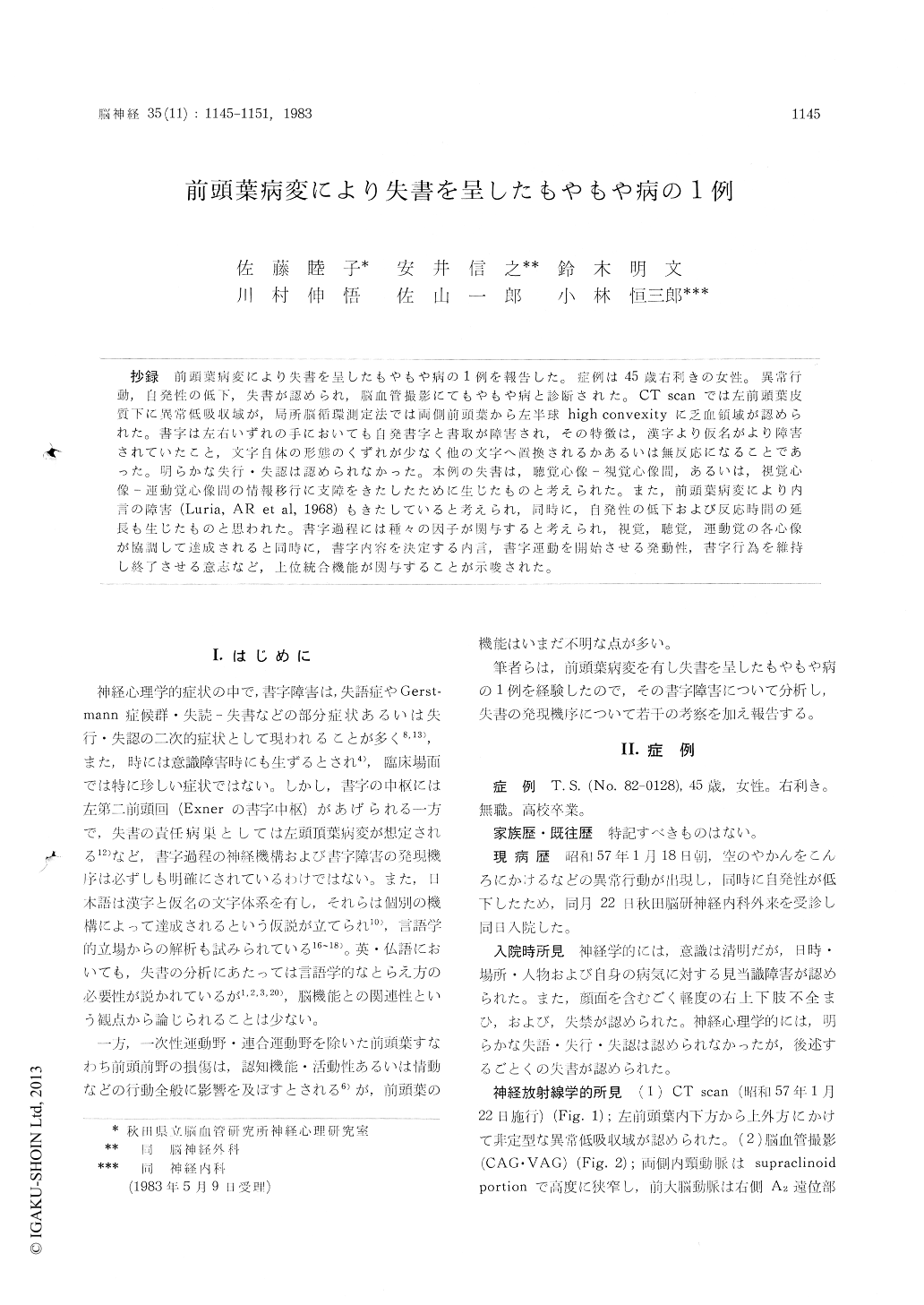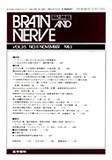Japanese
English
- 有料閲覧
- Abstract 文献概要
- 1ページ目 Look Inside
抄録 前頭葉病変により失書を呈したもやもや病の1例を報告した。症例は45歳右利きの女性。異常行動,自発性の低下,失書が認められ,脳血管撮影にてもやもや病と診断された。 CT scanでは左前頭葉皮質下に異常低吸収域が,局所脳循環測定法では両側前頭葉から左半球high convexityに乏血領域が認められた。書字は左右いずれの手においても自発書字と書取が障害され,その特徴は,漢字より仮名がより障害されていたこと,文字自体の形態のくずれが少なく他の文字へ置換されるかあるいは無反応になることであった。明らかな失行・失認は認められなかった。本例の失書は,聴覚心像—視覚心像間,あるいは,視覚心像—運動覚心像間の情報移有に支障をきたしたために生じたものと考えられた。また,前頭葉病変により内言の障害(Luria, AR et al,1968)もきたしていると考えられ,同時に,自発性の低下および反応時間の延長も生じたものと思われた。書字過程には種々の因子が関与すると考えられ,視覚,聴覚,運動覚の各心像が協調して達成されると同時に,書字内容を決定する内言,書字運動を開始させる発動性,書字有為を維持し終了させる意志など,上位統合機能が関与することが示唆された。
A 45-year-old woman showed agraphia and de-creasing spontaneity. She was diagnosed as Moya-moya disease by cerebral angiography. CT scans revealed the abnormal low density area in the left frontal lobe, and the regional cerebral blood flow study showed low perfusion in the bilateral frontal lobe and the left high convexity area.
She could copy specimens of the author's writ-ing, but her spontaneous writing and dictation were impaired with either hand. The form of eachletter she wrote was not so distorted, but wrong letters were substituted for the correct ones. Errors in Kana-writing were more common than in Kanji. Although her spontaneous speech was diminished, auditory comprehension, reading and construc-tional abilities were unaffected. She exhibited no agnosia and apraxia.
Agraphia in this case was caused by a discon-nexion between the visual image and auditory image and/or between the visual image and kine-sthetic image. Inner speech (Luria, AR et al, 1968) in this case might be disturbed, and decreasing spontaneity and delay of response resulted from the frontal lesion.
The writing process may be constituted of many factors ; images of visual, auditory and kinesthetic as well as primary functions of sensory and motor. Furthermore, it may be necessary for normal writing that one's inner speech, activeties and intention of writing behavior are intact.

Copyright © 1983, Igaku-Shoin Ltd. All rights reserved.


